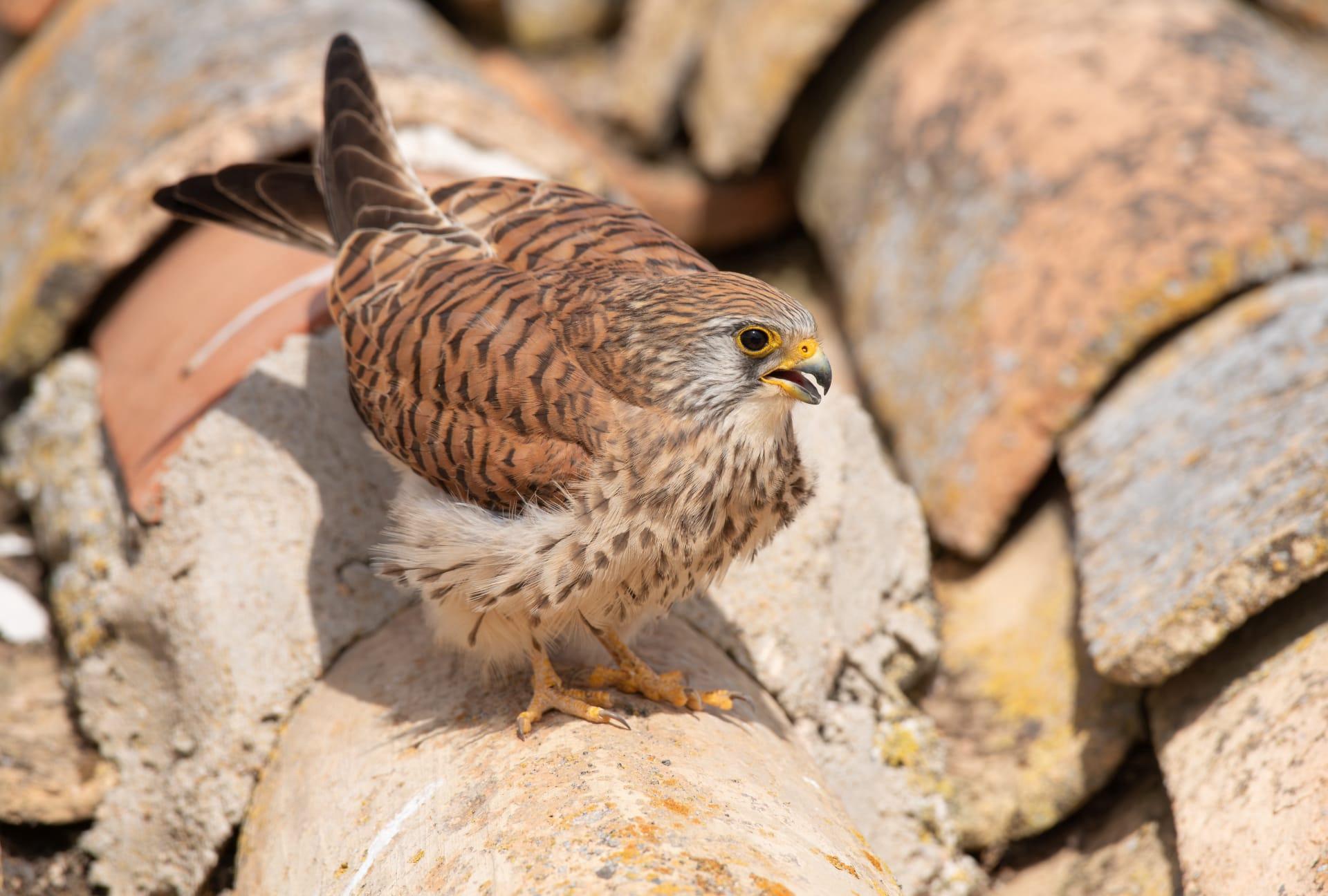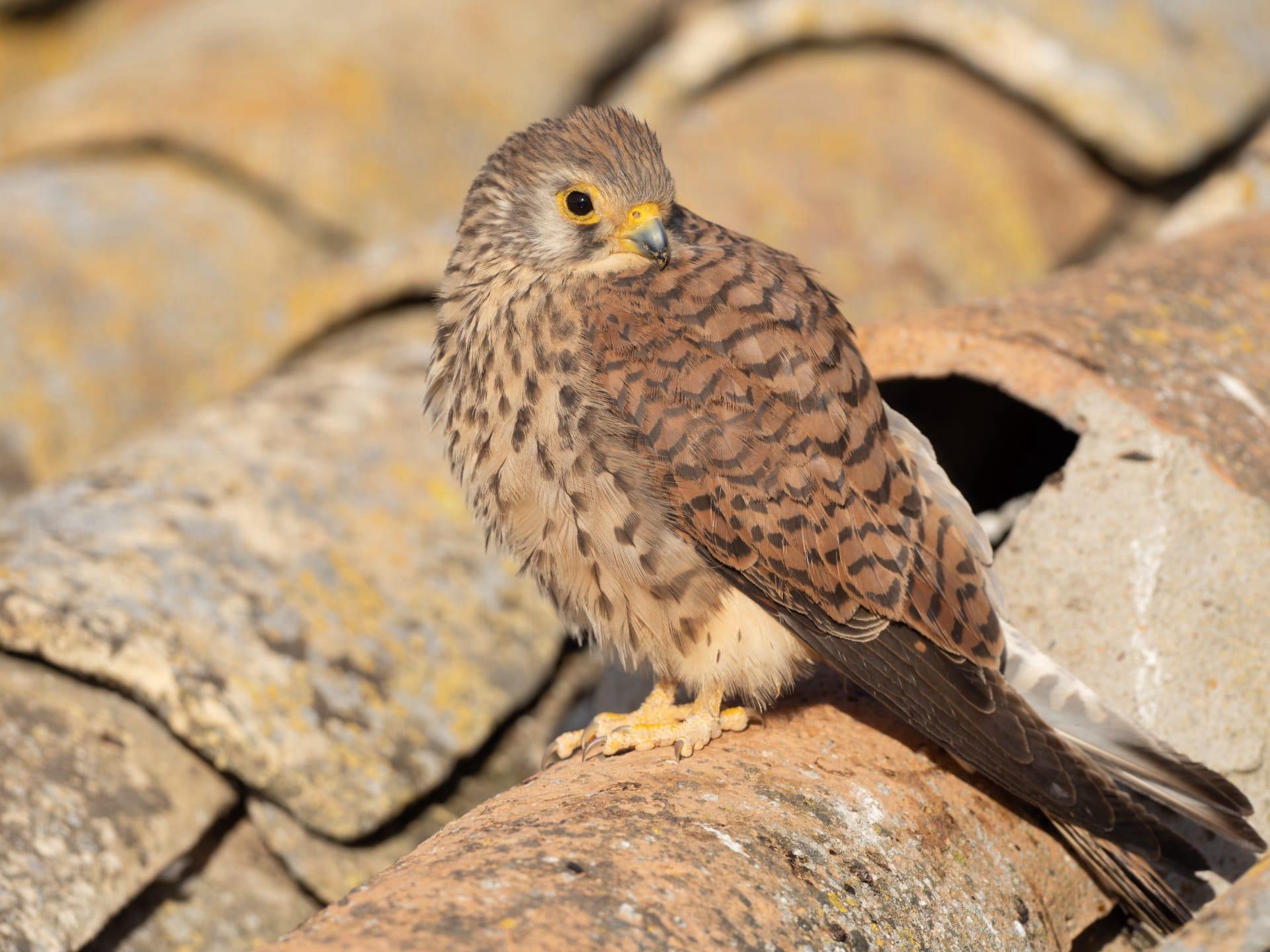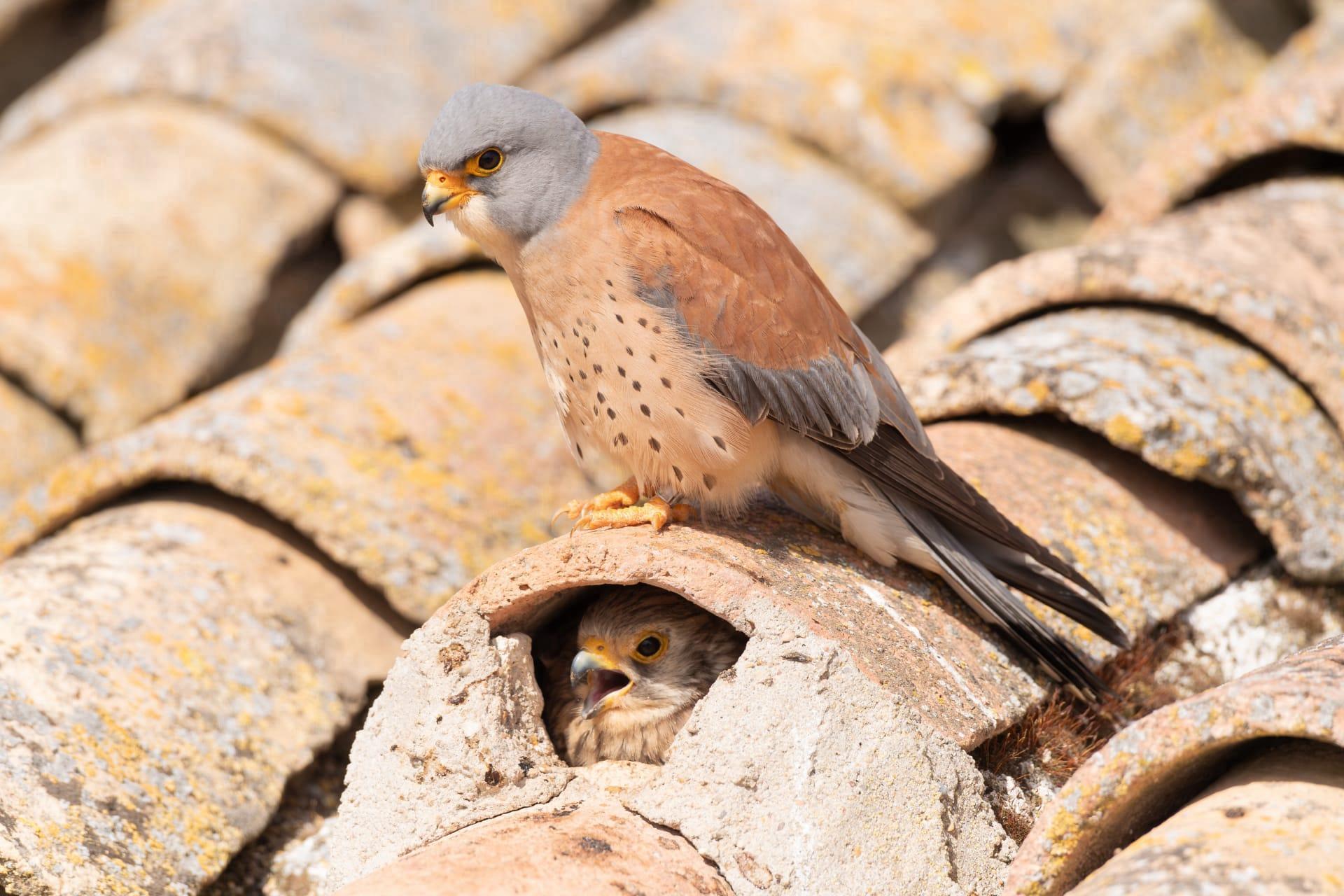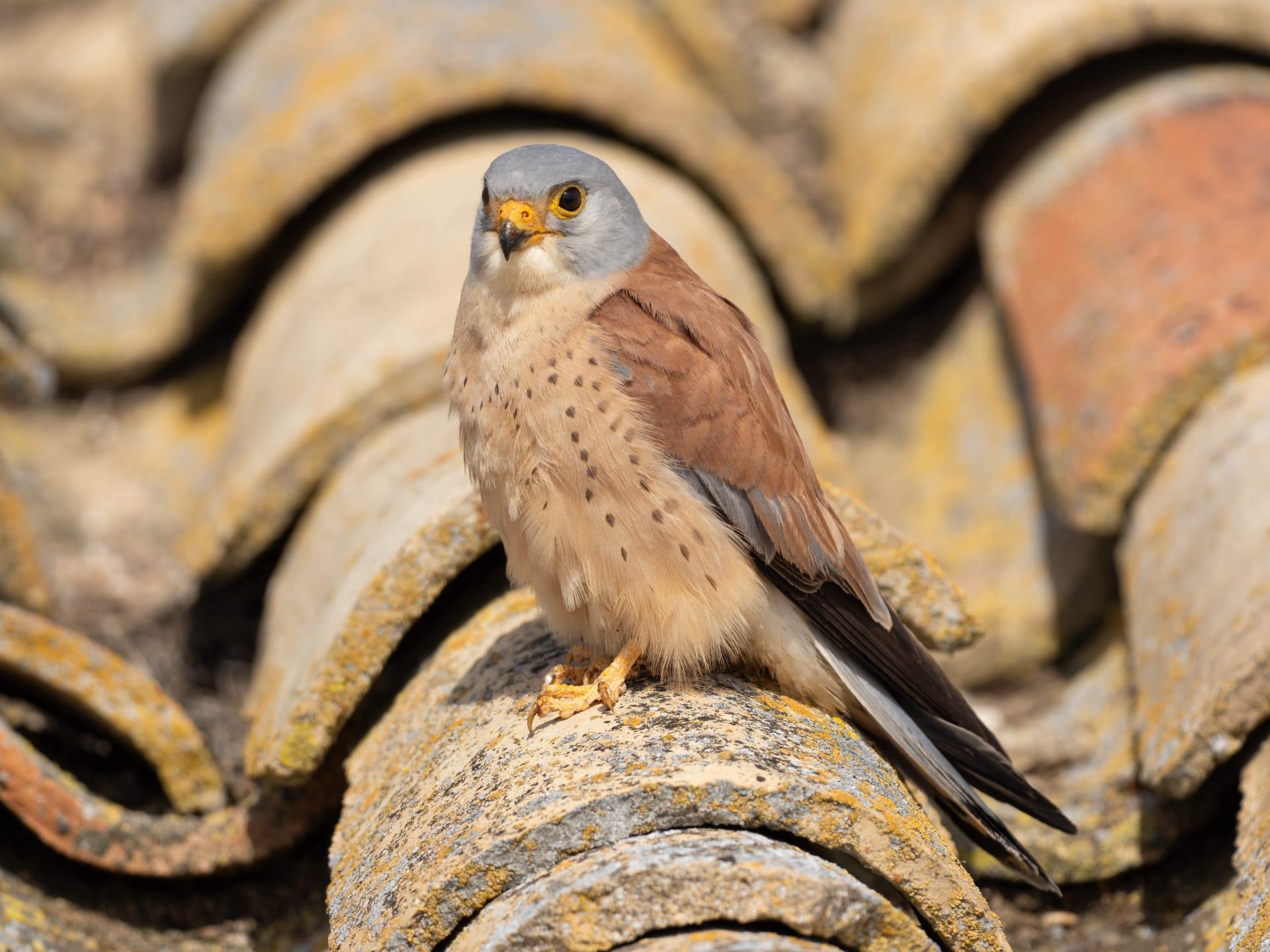Kestrel Characteristics
- Home /
- Mini Encyclopedia /
- Animal /
- Kestrel Characteristics
1
Kestrels, small yet powerful birds of prey, belong to the falcon family. They exhibit a striking combination of rust-red and gray plumage, making them easily recognizable. Adult kestrels typically span about 34 to 38 centimeters in length, with a wingspan ranging from 71 to 80 centimeters. On average, they weigh between 150 to 190 grams, with females generally being larger than males. In terms of longevity, kestrels can live up to 15 years in the wild, though this is rare, with most living around 4 to 5 years due to natural threats.
One of the most distinctive organs of a kestrel is its eyes. Kestrels possess not just extraordinary visual acuity but also the ability to see ultraviolet (UV) light. This unique capability plays a crucial role in hunting, as it allows them to track the trails of urine left by small mammals, like voles and mice, which are visible in UV light. This adaptation is particularly useful in open habitats, where these trails help kestrels identify and locate their prey with remarkable precision.

2
Question: How do Kestrels adapt to varying temperatures throughout the year?
Answer: Kestrels adapt to changing temperatures through a process called thermoregulation. During colder months, they fluff up their feathers to trap warm air close to their bodies, which acts as insulation. Conversely, in warmer conditions, they press their feathers closer to their bodies to reduce insulation and increase air circulation. Additionally, kestrels might change their hunting times, preferring dawn and dusk during hotter periods to avoid the midday heat. They also utilize shade and water sources effectively to regulate their body temperature.

3
The movement characteristics of kestrels are fascinating. They are known for a unique hunting behavior called "hovering." This involves flying at a height of about 10 to 20 meters above the ground, flapping their wings rapidly to maintain a steady position in the air. This technique allows them to scan the ground below for prey without moving forward. Their tail feathers adjust minutely to keep them stable, especially in windy conditions.
When it comes to hunting, kestrels exhibit remarkable precision. They primarily feed on small mammals, insects, and occasionally smaller birds. Their hovering technique, combined with their UV vision, enables them to detect and dive at high speeds towards their prey, often catching it by surprise. The typical hunting strategy involves a sudden, steep dive with closed wings, grabbing the prey with their talons. Kestrels also have keen hearing, aiding them in locating prey in tall grasses or under snow.

4
Kestrels are versatile in their habitat preferences, residing in a variety of environments including farmlands, urban areas, and grasslands. They prefer open areas with sparse vegetation, which facilitates their hunting strategy. These birds are found across Europe, Asia, Africa, and the Americas, demonstrating their adaptability to different geographical regions. Urban environments are increasingly becoming common habitats, with kestrels using building ledges and other structures for nesting.
Reproduction is a key aspect of kestrel life. They are generally monogamous and return to the same nesting sites each year. Nesting often takes place in natural cavities like tree holes, cliffs, and sometimes in abandoned buildings or nest boxes. Females lay between 3 to 6 eggs, which are incubated primarily by the female for about 28 to 30 days. The male plays a vital role in providing food during this period. Once hatched, both parents are involved in feeding the chicks, which fledge after approximately 4 to 5 weeks.

5
Book: "The Kestrel" by Andrew Village (1989). This book, published in the UK, delves into the biology and ecology of the kestrel with an emphasis on their behavior and breeding habits. Village combines field studies with a comprehensive review of existing research, offering insights into the life cycle, hunting strategies, and environmental adaptations of kestrels. The book serves as a valuable resource for ornithologists and bird enthusiasts alike.
Book: "Kestrels for Company" by Gordon Riddle (2011). Originating from Scotland, this book provides an intimate view of the kestrel’s life in a specific region. Riddle, through years of observation and study, narrates the everyday life of kestrels, their interaction with the environment, and the challenges they face. The book is enriched with personal anecdotes and observations, making it not only an informative read but also an engaging one for those interested in these captivating birds.